A timeless journey from New York to Montreal

It’s just after 8:30am on a weekday in Manhattan, and rush hour is in full swing at the Moynihan Train Hall, the glass-ceilinged complex annex of Pennsylvania Station, New York’s main intercity rail station. Amtrak’s Adirondack train – named after the expansive mountain range in northeastern New York State – is about to set off.
Despite the hustle and bustle on the concourse, there’s a sense of calm inside the comfortable cabin as we ready ourselves for the long journey ahead. The train line runs due north, connecting New York with the historic city of Montreal in the French-speaking Canadian province of Quebec. But the 12-hour, scenic ride between the two world-class cities is far more than a way to get from one place to another – it’s a way to savour the joys of slow travel.
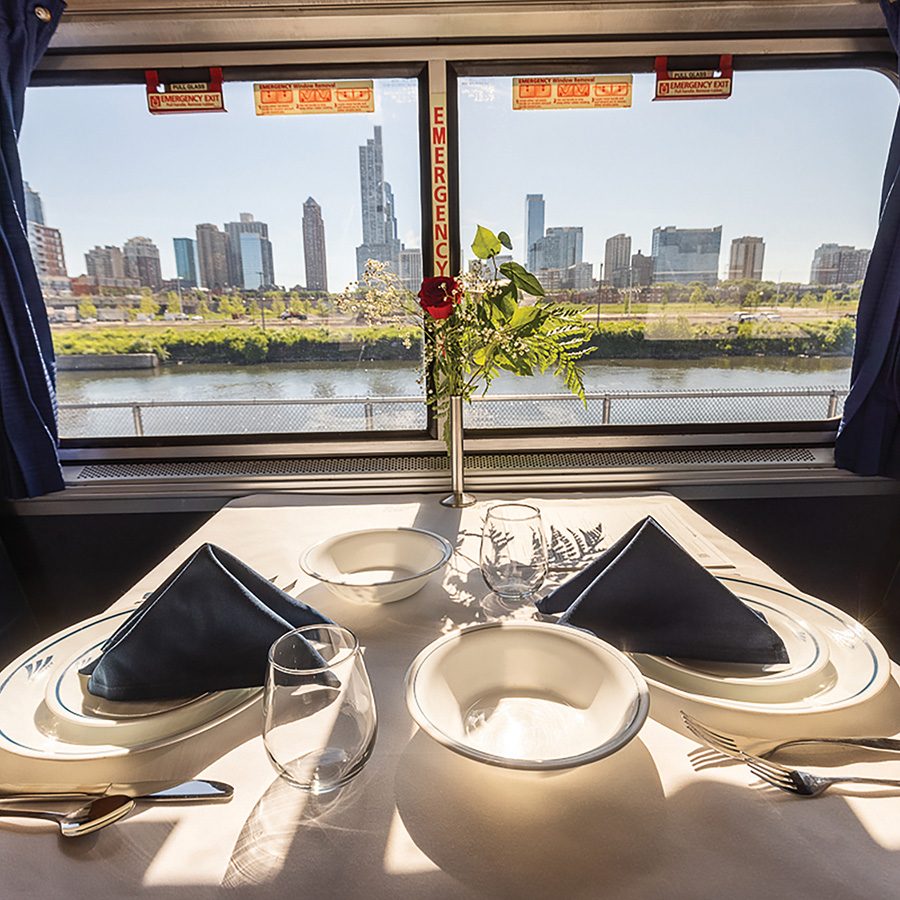
Credit: Amtrak
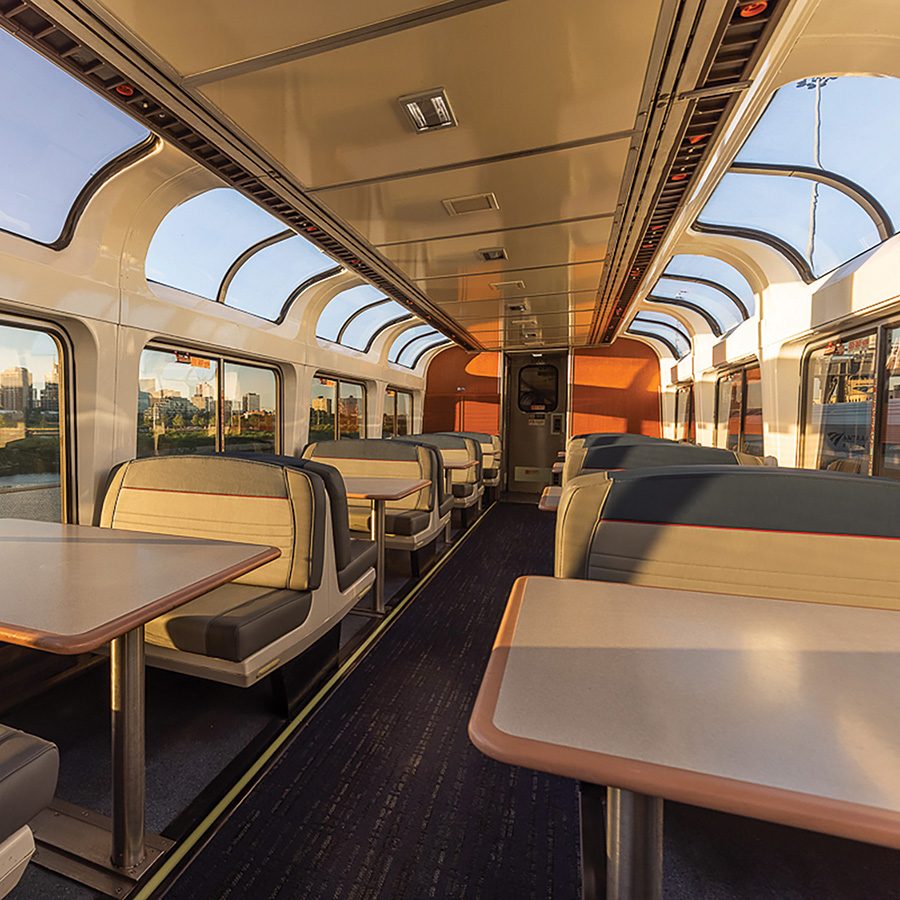
Credit: Amtrak
As the train leaves the platform and begins heading north, the skyscrapers, sirens and frenetic pace of the urban landscape melts away within an hour as we begin passing hillsides that sing in every shade of green in summer and sleep under a blanket of snow in winter. In a sense, the route is a journey not only through space but through time: a way to enjoy the picturesque Hudson Valley in much the same way that people have since the advent of the railroads.
Indeed, the region has been referred to as the birthplace of American tourism. While it was inhabited by Native American societies for thousands of years, holidaymakers began visiting the area in the late 18th century. And as the 19th century got underway, newly built railroads brought flocks of tourists to the area for activities such as skiing and horseracing, which still draw many travellers today.
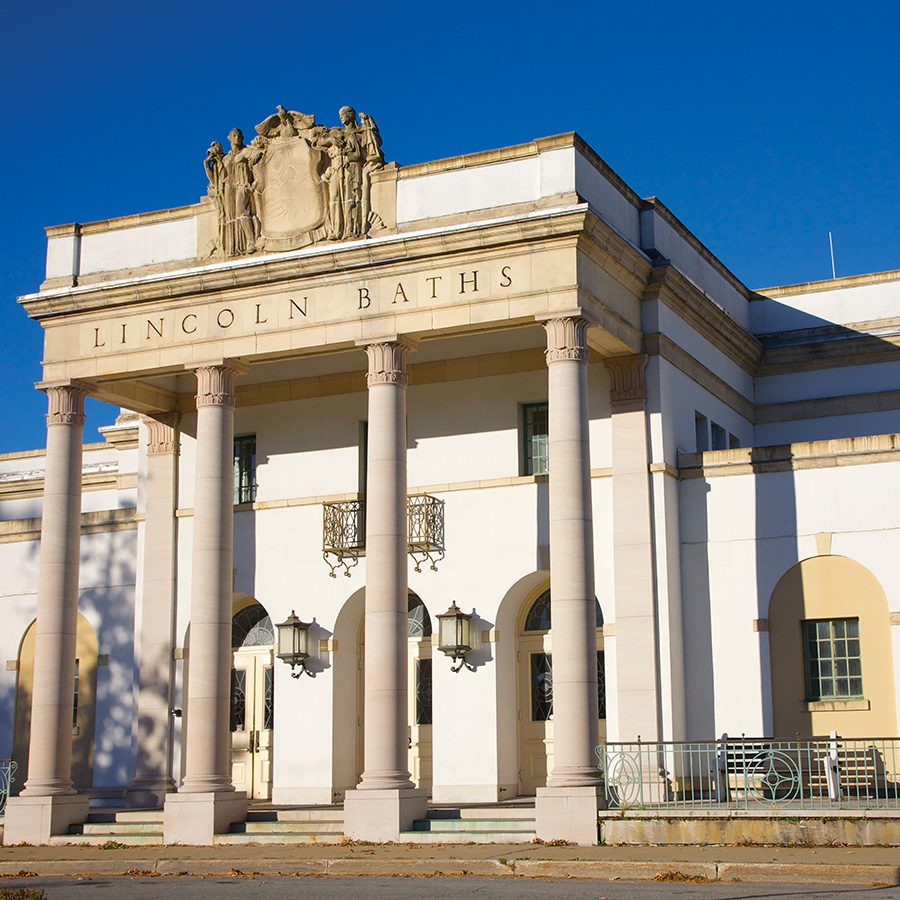
Credit: Barry Winiker/ Getty Images
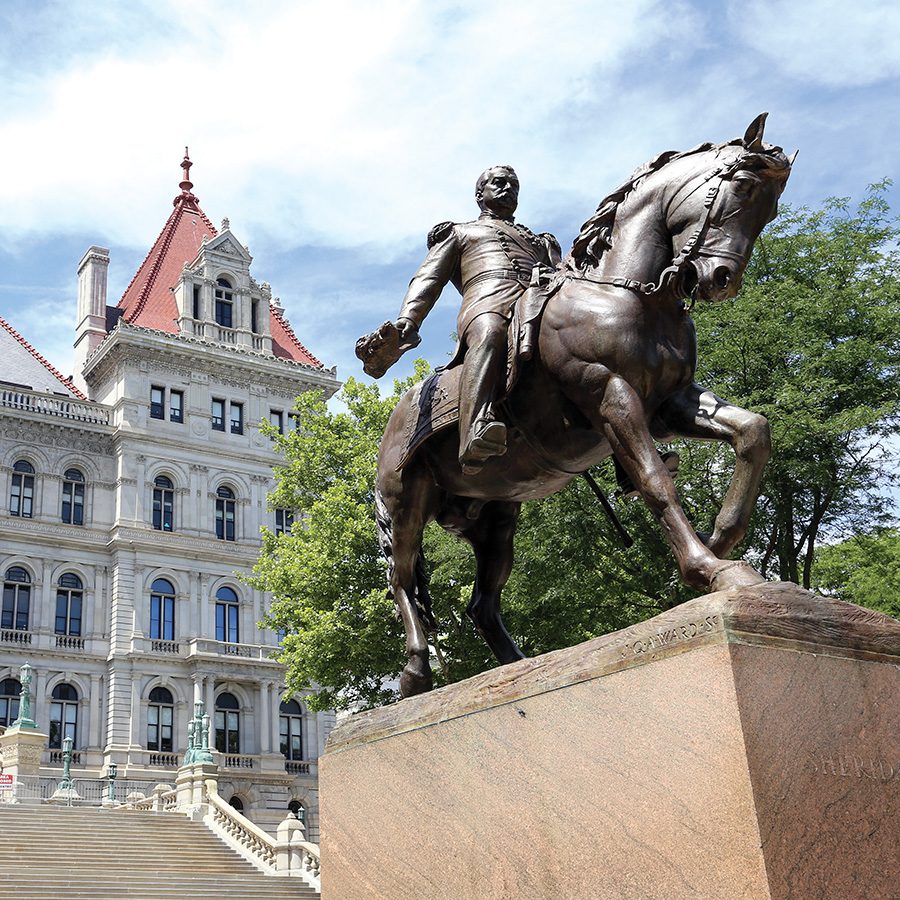
Credit: wellesenterprises/ Getty Images
While it’s possible to stay on board the Adirondack until it arrives in Montreal in the evening, stopping along the route is the best way to fully appreciate the region’s natural beauty and timeless charm. About three hours after leaving New York City, the train arrives at Albany, the capital of New York State since 1797 and a centuries-old political and commercial hub.
At the centre of the historic city is the New York State Capitol, an impressive white granite building that blends Renaissance, Romanesque and French Renaissance Revival architectural styles. To fully appreciate its history and architecture, join one of the daily tours to see all the building’s many rooms, halls and grand staircases, admire the ornate stonework on the walls and bannisters and retrace the footsteps of political figures such as Theodore and Franklin Roosevelt, who both served as New York State governor before becoming president.
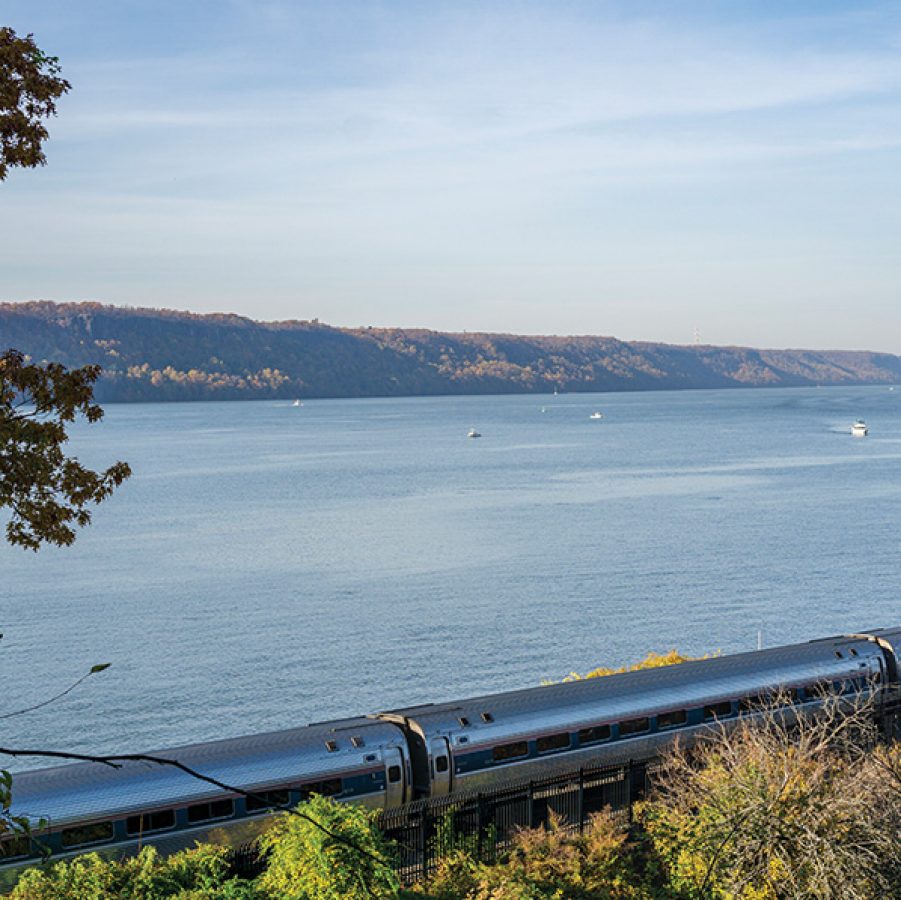
Credit: Renata Tyburczy/ Getty Images
A couple of stops after Albany, Saratoga Springs is a city of just over 28,000 that’s best known for its abundance of mineral water. Since the 1770s, the area has attracted wellness-seekers to soak away their aches and fatigue – an experience that you can enjoy at the nearly nine-decade-old Roosevelt Baths & Spa, where mineral baths are complemented with massages and nature-inspired beauty treatments for the ultimate pampering. And if you’re not in a hurry to get to Montreal, plan an overnight stay at The Inn at Saratoga. Established in 1843, the city’s oldest continuously operating hotel exudes Victorian charm.
After a good night’s rest, the northward journey on the Adirondack continues. About 45 minutes after departing from Saratoga Springs, the train begins to hug the shores of Lake Champlain, an expansive body of water that stretches more than 170km along the state lines of New York and Vermont and into Quebec. The train runs along the lake for hours, sometimes getting right up to the edge. It’s the perfect time to reflect on a journey that takes you on the same paths trodden by the country’s earliest inhabitants. For you, this is “slow travel”. For them, it would have been inconceivable.
By the time the train pulls into Montreal Central Station at just after 8pm, there’s still plenty of time for a late dinner and nightcap. You are 12 hours and a country away from where you started, ready to pick up the pace once more.
Tickets on the Adirondack train start at about US$50 (HK$390).
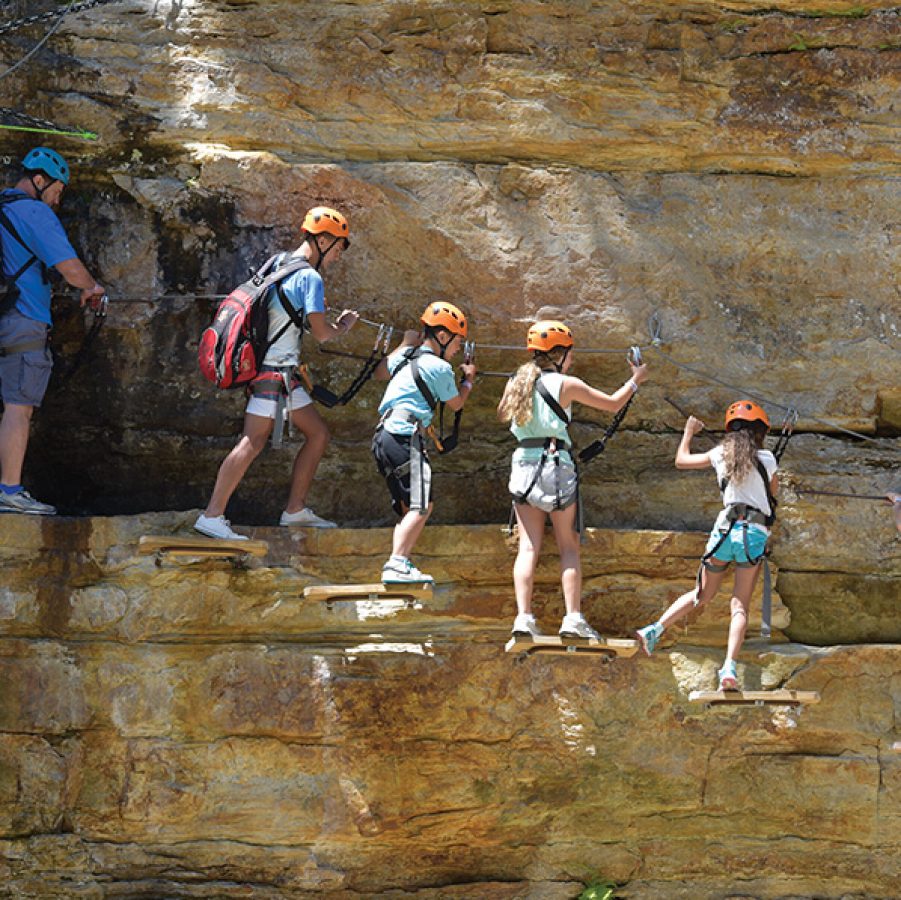
Adirondack add-ons: sights to see along the train line
1. Ausable Chasm
Known as the Grand Canyon of the Adirondacks, this sandstone gorge 21km south of Plattsburgh Station offers hiking, climbing and river rafting with views of cascading waterfalls. Explore the trails on your own or on a guided tour.

Credit: Wirestock/ Getty images
2. High Falls Gorge
People of all ages and abilities can enjoy this privately owned, nine-hectare nature park with four waterfalls and glass-bottomed walkways over churning rivers.
Credit: Nick Pedersen/ Getty Images
3. Fort Ticonderoga
An important site during the American Revolutionary War (1775-83) as well as previous colonial conflicts, this 18th-century fort next to Ticonderoga Station is now a popular destination for historical education and family-friendly fun.
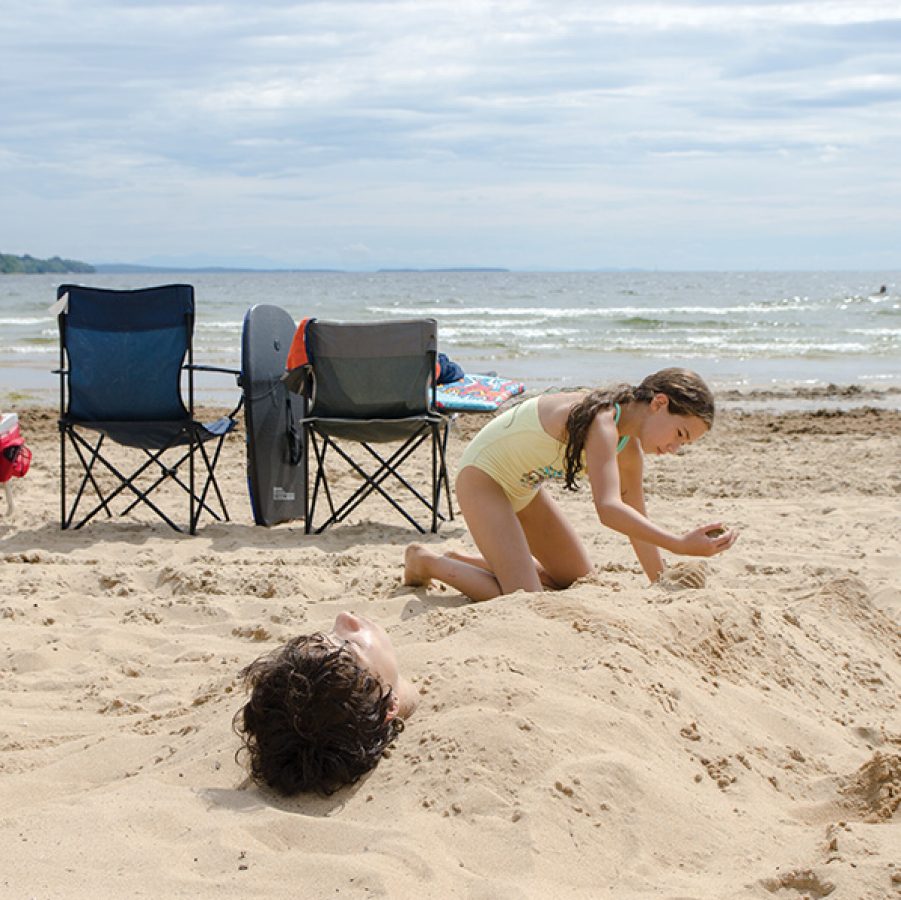
Credit: Marc Dufresne/ Getty Images
4. Plattsburgh City Beach
A short drive from Plattsburgh Station, this beach stretches about 2km along Lake Champlain and offers picnic areas, outdoor grills and kayak rentals.
More inspiration
New York travel information
- China – the Chinese Mainland, Hong Kong SAR, Macao SAR and Taiwan Region
- Hong Kong SAR - English
- Chinese Mainland (China) - English
- Taiwan, China - English
- 香港特別行政區 - 繁體中文
- 中国內地 - 简体中文
- 中國台灣 - 繁體中文
- Africa
- South Africa - English
- Americas
- Canada - English
- Canada - Français
- United States - English
- Asia
- Bangladesh - English
- Korea - English
- Singapore - English
- Cambodia - English
- 한국 - 한국어
- Sri Lanka - English
- India - English
- Malaysia - English
- Thailand - English
- Indonesia - English
- Maldives - English
- ประเทศไทย - ภาษาไทย
- Indonesia - Bahasa Indonesia
- Myanmar - English
- Vietnam - English
- Japan - English
- Nepal - English
- Việt Nam - tiếng Việt
- 日本 - 日本語
- Philippines - English
- Australasia
- Australia - English
- New Zealand - English